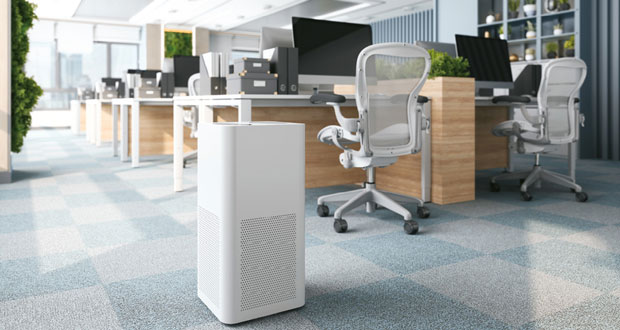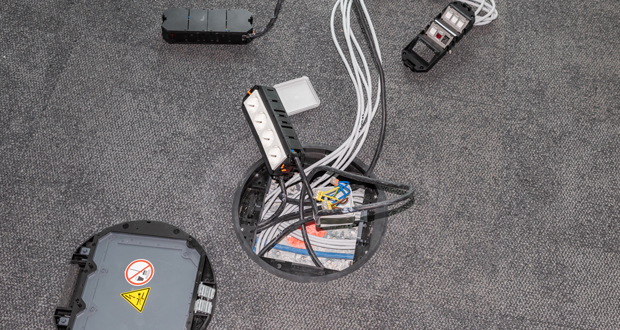AESTHETICS
The modern office has a big job to do. Employers are investing heavily in creating memorable employee experiences, with a focus on wellbeing, inclusion, socialising and collaboration. As office aesthetics and experiences matter more than ever, locating comms and HVAC pipework under floors and out of sight becomes more critical.
Raised flooring also unlocks a wide variety of modular flooring options, from carpet tiles, LVT, and rubber to statement options such as metal panels and other custom designs—all of which can help support the overall office design.
COST EFFICIENCY WITH DILAPIDATIONS
Landlords often specify that properties must be returned to them as empty open-plan floorplates, with original specifications and all cabling removed, all of which can be costly to address at the end of a lease. Raised flooring can help negate the need for expensive dilapidations. Finishes like carpet tiles can be lifted and removed quickly. All wiring and cabling can be removed with minimal or no damage to the building’s original Cat A fit-out. It also avoids major costs such as replacing vast swathes of flooring.
INCLUSIVITY AND ACCESSIBILITY
Inclusivity and accessibility are vital for the employee experience and integral to office interior design. Raised flooring allows for continuous and even surfaces across the office, eliminating trip hazards and precisely matching floor heights between different spaces, such as lift lobbies, main floorplates and toilets. This makes a much more equitable experience for employees.
Similarly, raised flooring can also help with acoustic management. Under-floor HVAC and acoustic systems can help reduce ceiling clutter and sound reverberation, creating much quieter and less distracting workspaces for employees. As employers consider the specific needs of neurodivergent employees in the workplace, particularly those with sensory sensitivities, this is another significant plus.
COMFORT AND CARBON EFFICIENCY
Air quality is a hugely important factor in the modern workplace experience, impacting productivity and wellbeing. Raised flooring can maintain consistent temperatures, helping HVAC systems run more efficiently and reducing energy consumption. This also supports employers’ growing need to reduce carbon emissions.
This all helps to support more sustainable behaviours as the flexibility that raised flooring offers can also help to avoid sizeable fit-out changes, reducing unnecessary waste and carbon emissions from future workplace changes. Carbon reduction is even greater when reclaimed materials are used to create raised floors.
THE CASE FOR VERSATILITY
Raised flooring is a valuable long-term asset that benefits building owners and occupiers alike. For landlords, it enhances a building’s lettings appeal and can reduce long-term fit-out and reinstatement costs. For tenants, it helps bring destination offices to life, supporting evolving workplace layouts, technology upgrades, inclusive design values, and sustainable thinking with minimal disruption.
At Claremont, we’re hugely focused on making every surface count. Every surface in a workplace, from ceilings and walls to the sides of furniture and floors themselves, provides an opportunity to enhance the employee experience, tell the employer brand story, and create high-performing workplaces.
Raised flooring is a key tool in the creative office interior design arsenal, and it will continue to play a pivotal role in creating flexible, future-ready workspaces in the UK.






